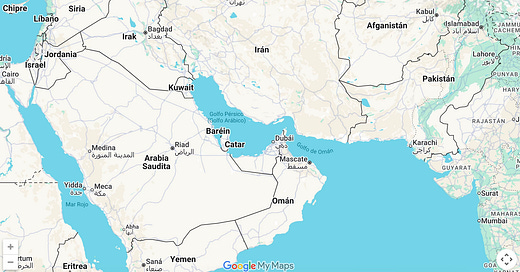ISRAEL Vs IRAN: Technology Reshapes Deterrence, Elevating Non-Nuclear Threats in Cold War 2.0
Non-nuclear threats—AI, cyber, precision strikes—now rival nuclear deterrence, reshaping global power.
The Middle East is a crucible for a new global order, where Israel’s Operation Rising Lion seeks to dismantle Iran’s strategic capabilities and Saudi Arabia’s NEOM project aims to redefine regional power through technology. This convergence of military precision and technological ambition unfolds within Cold War 2.0, where AI, hypersonic weapons, and data analytics supplant traditional deterrence. The stakes are immense: a reshaped Middle East could stabilize energy markets or ignite chaos, with technology as the decisive factor.
Israel’s Precision in Operation Rising Lion:
Modeled on real-world campaigns like Israel’s 2018 strikes on Syrian defenses, the operation’s first phase has neutralized Iran’s air defenses and eliminated key Revolutionary Guard leaders, per hypothetical intelligence reports.
Strikes likely leverage advanced analytics, akin to Palantir’s Gotham platform ($178 million U.S. Army contract, 2023), exposing vulnerabilities in Iran’s command structure.
Sustaining this advantage demands overcoming Iran’s fortified nuclear facilities, a significant challenge.
U.S. as Strategic Linchpin:
Israel requires U.S.-provided GBU-57 bunker-busting bombs to target Iran’s underground sites like Natanz, as noted in 2023 Defense News analyses.
The U.S. backs Israel to curb Iran’s influence without ground forces, consistent with its post-2021 withdrawal strategy from Afghanistan.
This support empowers Netanyahu but risks U.S. entanglement if Iran escalates unpredictably.
Regime Change Gambit:
The operation’s endgame targets a pro-Western Iran, capitalizing on internal divisions seen in 2022 protests (Amnesty International, 2022).
History—Iraq 2003, Libya 2011—warns of chaos, with risks of empowering Hezbollah or sparking civil war rivaling the benefits of a secular regime.
Success hinges on managing Iran’s fragmented elite, but missteps could entrench hardliners.
Iran’s Asymmetrical Arsenal:
Strait of Hormuz Blockade: Halting 21 million barrels daily (21% of global oil, EIA 2023) could push Brent crude from $80 to $160 per barrel (Goldman Sachs, 2024), as seen in the 10% spike after Iran’s 2019 threats.
Hypersonic Missiles: Iran’s Fattah-1 (Mach 5+, Reuters 2023) could overwhelm Iron Dome, targeting Israeli urban centers.
Dirty Bomb: A speculative act would likely trigger NATO retaliation, escalating globally.
Iran’s strategy will prioritize economic disruption to preserve regime stability.
Economic Fallout:
Failure maintains Iran’s sanctions, sustaining oil prices above $90 per barrel (IMF 2024), bolstering Russia and straining global economies.
Success could flood markets with Iranian oil, cutting prices to $50 per barrel (OPEC 2023), aligning with U.S. energy goals but pressuring Saudi Arabia’s fiscal plans.
Markets face 2022-style volatility, with inflation threatening sectors like manufacturing.
Cold War 2.0: Technology as Deterrence:
Unlike Cold War 1.0’s proxy wars, Cold War 2.0 elevates AI, cyber, and hypersonic tech. China’s $15 billion AI spend (CSIS 2023) and Russia’s Zircon missile (2022) challenge U.S.-Israeli precision.
U.S. targeting capabilities, possibly via Palantir, unsettle regimes from Pyongyang to Beijing, redefining non-nuclear deterrence.
Technology’s centrality amplifies the stakes, as no leader is immune to surgical strikes.
Israel’s F-35 Autonomy and NATO Friction:
Israel’s F-35I Adir jets, with AI-driven targeting (Defense News 2022), bypass U.S. oversight, granting unmatched flexibility.
NATO allies, reliant on standard F-35s, are spurring Europe’s $100 billion Future Combat Air System (Airbus 2024) to counter dependency.
This technological split could erode NATO cohesion, a strategic liability by 2035.
Syria’s Divided Future:
Iran’s decline splits Syria between Turkey’s expansionist aims and Russia’s bases, like Tartus (2023 deployments).
A U.S.-Russia quid pro quo—“Ukraine for Iran”—may stabilize tensions, but Russia will offset losses through proxies.
China’s $2 billion Syrian investments (Belt and Road, 2023) could exploit economic gaps, challenging Western influence.
Saudi Arabia’s Technological Ascent:
Mohammed bin Salman’s Vision 2030 positions Saudi Arabia as a tech power, with NEOM—a $500 billion AI-driven smart city—as its flagship (NEOM 2024).
NEOM’s $10 billion from SoftBank and Blackstone faces a $50 billion shortfall (Reuters 2024), with delays threatening viability, yet success could make Saudi a green-tech leader.
Qatar’s normalized ties since 2021 (Al Jazeera) enable economic synergy, with its gas wealth complementing Saudi ambitions.
Iran’s weakening allows Saudi leadership, but low oil prices post-regime change could strain NEOM’s funding.
Russia’s Strategic Gambit in Georgia:
Russia could gamble to take Georgia, given its geopolitical importance as a buffer against Western influence and a gateway to the South Caucasus, a region critical to Moscow’s regional dominance.
Recent sentiment suggests Russia might exploit Georgia’s internal divisions or economic ties to expand control, especially if its Ukraine campaign falters, though this remains a high-risk move.
Success would bolster Russia’s Black Sea foothold, but failure could provoke NATO backlash, intensifying Cold War 2.0 tensions.
Authoritarian Regimes’ Vulnerability:
U.S.-Israeli precision strikes alarm Kim Jong-un, Putin, and China’s Xi, who face risks of targeted eliminations.
China’s $400 million cyber defense budget (2023) and Russia’s hypersonic advances signal a counter-tech race, intensifying Cold War 2.0.
Non-nuclear threats—AI, cyber, precision strikes—now rival nuclear deterrence, reshaping global power.
Risks and Opportunities:
Risks: Iran’s retaliation—Hormuz blockade, missiles, or a dirty bomb—could spark regional war, spike inflation, and derail NEOM.
Opportunities: A pro-Western Iran stabilizes oil at $50 per barrel, weakens Russia-China, and bolsters U.S. dominance, while NEOM cements Saudi Arabia’s tech rise.
Regime change’s volatility, as in Iraq 2003, risks empowering groups like Hezbollah, undermining progress.
Operation Rising Lion and NEOM are twin pivots in a Middle East redefined by technology. Russia’s potential move on Georgia adds a wildcard, amplifying Cold War 2.0 stakes. Success could usher in a stable, tech-driven order, but failure risks chaos and escalation. The margin for error is vanishingly small.
Thanks for reading ,
Guillermo Valencia A
Cofounder of MacroWise



